Pollen
 Alan Wood
Alan Wood
All flowering plants produce pollen, microscopic grains on the stamens of male flowers that need to be transferred to the pistils of female flowers so that they can produce seeds. It is usually transferred by insects (including honeybees) or by wind.
Every type of pollen is different, and experts can look at pollen grains and tell which plants they came from. This can provide valuable information in sciences including forensics and archaeology, and they can even check which plants were the source of nectar in honey.
The largest pollen grains are around 200 µm in diameter, and the smallest are less than 10 µm, so you need a microscope to study them. At 100× you can see the grains, at 400× you can start to see details, and at 1000–1500× you can see enough details to make a good drawing. Pollen grains are usually pale colours and so they are stained to make them easier to see under a microscope.
Quekett member Norman Chapman has drawn hundreds of pollen grains, and here is one of them:
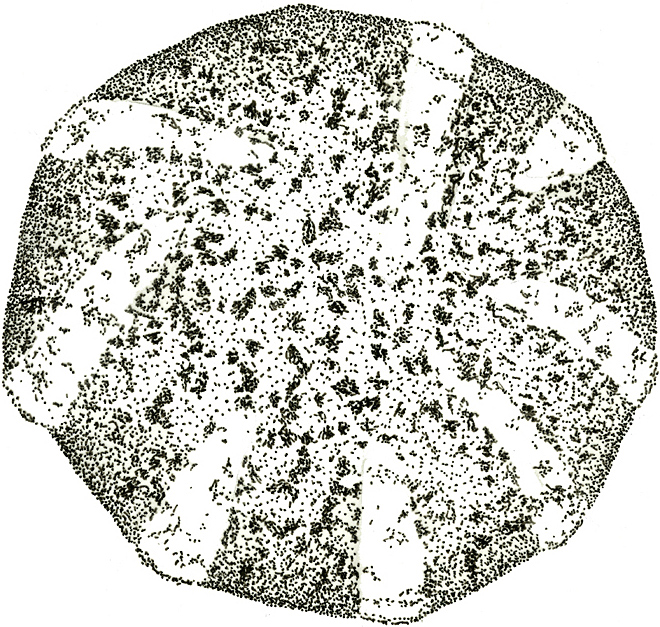 Cowslip (Primula veris L.) pollen grain, 26.9 µm diameter, showing an unusual pattern of 8 furrows [Copyright © Norman Chapman]
Cowslip (Primula veris L.) pollen grain, 26.9 µm diameter, showing an unusual pattern of 8 furrows [Copyright © Norman Chapman]
Norman prepares slides of the pollen grains and then uses a magnification of between 600× and 1500× to examine them. He takes several digital images at different focus levels to show the essential layout of the structure, and he estimates the size using an eyepiece graticule. This gives him the shape and position of the different parts of the pollen grain, and he then fills in the details by hand, drawing directly from visual observations. Norman has published a book (Pollen Microscopy) of his pollen drawings and colour photographs of the flowers.
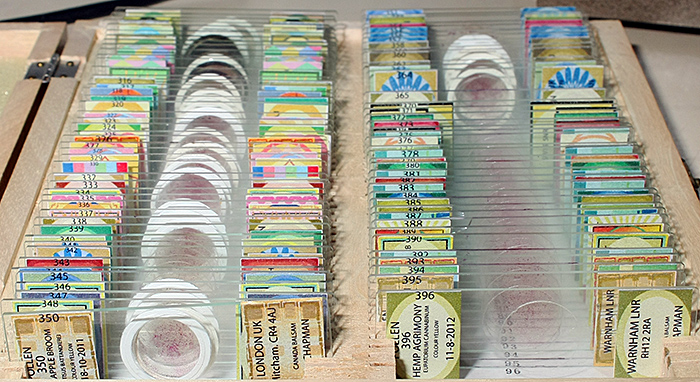 Norman Chapman’s pollen slides
Norman Chapman’s pollen slides
Most microscopists don’t have the patience or skill to make drawings like this, but digital cameras make it fairly easy to take photographs of pollen.
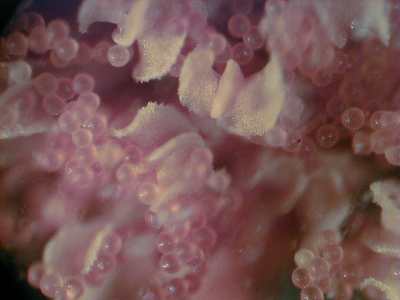 Stamen of mallow (Malva sp.) showing dozens of pollen grains [by Barry Ellam]
Stamen of mallow (Malva sp.) showing dozens of pollen grains [by Barry Ellam]
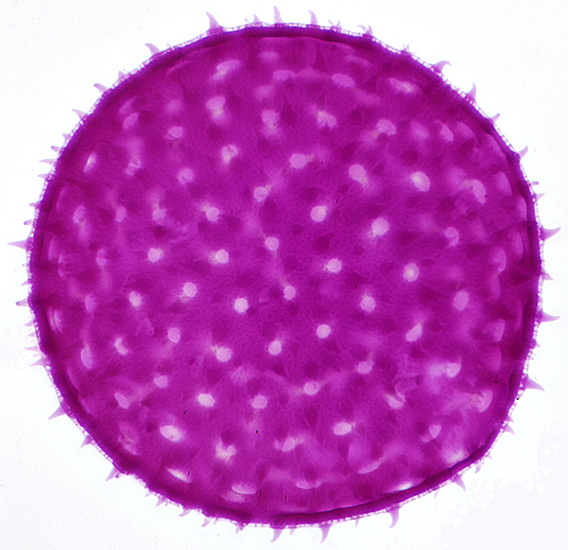 Single pollen grain of mallow (Malva sp.), diameter 150 µm, stained with fuchsin to make it more visible
Single pollen grain of mallow (Malva sp.), diameter 150 µm, stained with fuchsin to make it more visible
Using different types of illumination can also reveal details in pollen grains
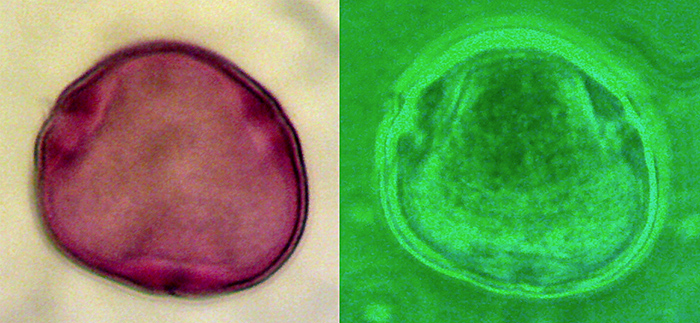 Lime pollen grain using brightfield (left) and phase contrast illumination [by John Rhodes]
Lime pollen grain using brightfield (left) and phase contrast illumination [by John Rhodes]
Pollen is a popular subject for slides shown at our Annual Exhibition of Microscopy.
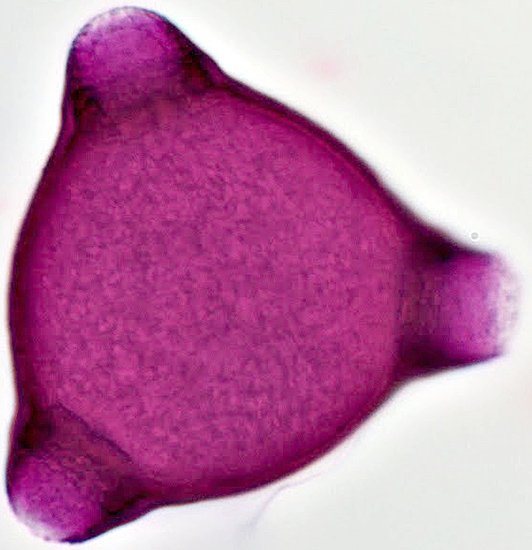 Single pollen grain of rosebay willowherb [slide by David Galliford]
Single pollen grain of rosebay willowherb [slide by David Galliford]
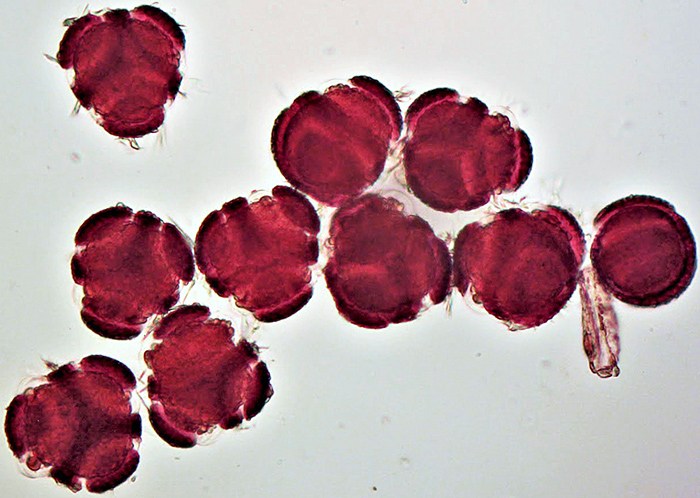 Pollen of Passiflora [slide by John Blakesley]
Pollen of Passiflora [slide by John Blakesley]
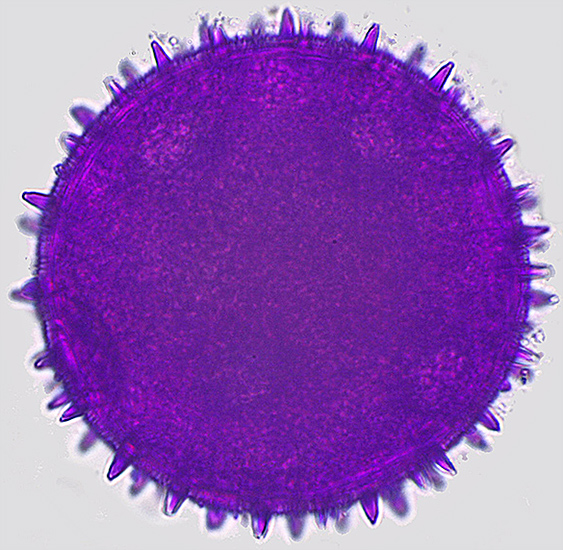 Single pollen grain of butternut squash [slide by David Galliford]
Single pollen grain of butternut squash [slide by David Galliford]
If you would like to look at different types of pollen, you can buy a set of prepared microscope slides from suppliers including Brunel Microscopes and Magnacol.
It is quite easy to make your own slides of pollen, and you can buy a kit from Brunel Microscopes.
- Find out more about pollen on Wikipedia
- Find out more about palynology on Wikipedia
- See more of Norman Chapman’s pollen drawings in his book Pollen Microscopy
- Download the Quekett leaflet on Things to look at with microscopes: pollen

